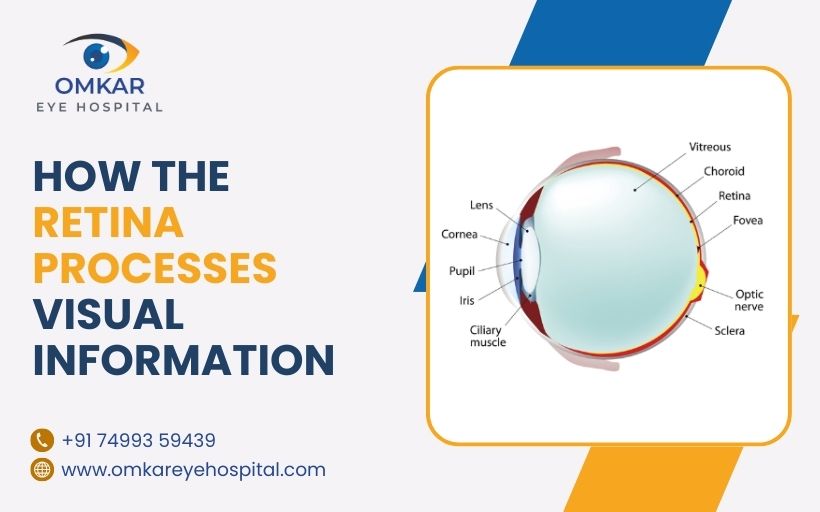Everyone is curious to learn things that are new and different, right? Especially when it comes to understanding how our bodies work, it feels like uncovering a hidden marvel. Among all the incredible systems in our body, how we perceive the world through our eyes is fascinating. Think about it—every color, shape, movement, and even the smallest detail we see begins as light enters our eyes. But how does this light transform into the rich tapestry of images we experience daily?
The retina is at the heart of this magic, a thin yet complex layer of cells at the back of our eyes. While it may look simple, the retina is like a high-tech processor, converting light into signals and sending them to the brain, where the final picture is formed. It’s not just about seeing—it’s about understanding and interpreting the world around us. So, let’s explore the incredible process and see how the retina processes visual information.
Structure of the Retina
The retina comprises various layers, each with specialized cells that contribute to visual processing:
Photoreceptors:
These are the light-detecting cells, consisting of rods and cones. Rods are sensitive to low light levels and are crucial for night vision, while cones detect color and are essential for perceiving fine details.
Bipolar Cells:
Acting as intermediaries, these cells transmit signals from photoreceptors to ganglion cells.
Ganglion Cells:
These cells receive input from bipolar cells and their axons form the optic nerve, which carries visual information to the brain.
Horizontal and Amacrine Cells:
These interneurons modulate the signals between photoreceptors and bipolar cells and between bipolar and ganglion cells, respectively, enhancing contrast and detecting motion.
Processing Visual Information
When light enters the eye, it passes through the cornea and lens, focusing on the retina. Photoreceptors absorb this light, triggering chemical changes that convert light into electrical signals—a process known as phototransduction. These electrical signals are then relayed to bipolar cells, which process and refine the information before passing it to ganglion cells. Ganglion cells integrate the input and generate action potentials—the language of the nervous system. The axons of ganglion cells bundle together to form the optic nerve, transmitting visual information to the brain for further processing.
Parallel Processing and Feature Detection
The retina does not merely pass along visual information. Through parallel processing, different types of ganglion cells specialize in detecting various features such as edges, motion, and color. This specialization allows the retina to extract critical information from a visual scene efficiently.
For instance, certain ganglion cells are tuned to detect contrast between light and dark areas, aiding in edge detection. Others are sensitive to specific wavelengths of light, contributing to color perception. This division of labor ensures that by the time visual information reaches the brain, it's already organized into manageable components.
Adaptation and Sensitivity
The retina exhibits remarkable adaptability, adjusting its sensitivity based on ambient light levels, known as light and dark adaptation. In bright conditions, photoreceptors decrease their sensitivity to prevent overstimulation, while in darkness, they increase sensitivity to detect minimal light. This adaptability ensures consistent visual perception across varying lighting conditions.
Clinical Relevance
Understanding retinal processing is crucial for diagnosing and treating visual disorders. Conditions where the retina is affected, such as retinitis pigmentosa due to certain reasons and age-related eye disorders, directly affect photoreceptors, leading to vision loss. Advancements in retinal research have paved the way for innovative treatments, including retinal implants and gene therapies, offering hope to those affected by such conditions.
The retina is not just a passive receiver of light but an active processor, converting light into neural signals and performing preliminary analyses before transmitting information to the brain. Its intricate structure and function are fundamental to our ability to see and interpret the world around us. Ongoing research is attempting to uncover the complexity of retinal processing, promising new insights into the wonders of human vision.
If you are looking for an eye specialist in Chinchwad, book an appointment at Omkar Eye Hospital for better eye health!


